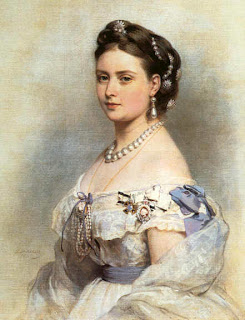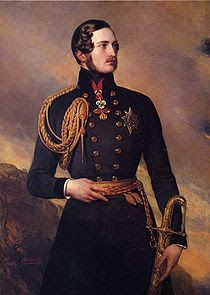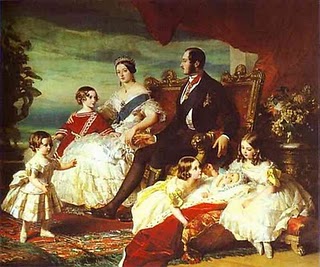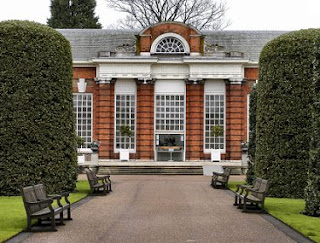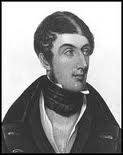 |
| Charles Greville |
From the Greville Memoirs
March 11th. (1838) — I dined yesterday at the Palace, much to my surprise, for I had no expectation of an invitation. There was a very numerous party:—the Hanoverian Minister Baron Miinchhausen, Lord and Lady Grey, the Chancellor, the Roseberys, Ossulston, Mahon, etc. We assembled in the round room next the gallery, and just before the dinner was ready the Queen entered with the Duchess of Kent, preceded by the Chamberlain, and followed by her six ladies. She shook hands with the women, and made a sweeping bow to the men, and directly went in to dinner, conducted by Miinchhausen, who sat next to her, and Lord Conyngham on the other side. The dinner was like any other great dinner. After the eating was over, the Queen’s health was given by Cavendish, who sat at one end of the table, and everybody got up to drink it: a vile, vulgar custom, and, however proper it may be to drink her health elsewhere, it is bad taste to have it given by her own officer at her own table, which, in fact, is the only private table it is ever drunk at. However, this has been customary in the two last reigns. George III never dined but with his family, never had guests, or a dinner party.
 |
| Queen Victoria’s mother, the Duchess of Kent |
“The Queen sat for some time at table, talking away very merrily to her neighbours, and the men remained about a quarter of an hour after the ladies. When we went into the drawing-room, and huddled about the door in the sort of half-shy, half-awkward way people do, the Queen advanced to meet us, and spoke to everybody in succession, and if every body’s ‘palaver ‘ was as deeply interesting as mine, it would have been worth while to have had Gurney to take it down in short-hand. The words of kings and queens are precious, but it would be hardly fair to record a Royal after-dinner colloquy. . . . After a few insignificant questions and answers, —gracious smile and inclination of head on part of Queen, profound bow on mine, she turned again to Lord Grey. Directly after I was (to my satisfaction) deposited at the whist table to make up the Duchess of Kent’s party, and all the rest of the company were arranged about a large round table (the Queen on the sofa by it), where they passed about an hour and a half in what was probably the smallest possible talk, interrupted and enlivened, however, by some songs which Lord Ossulston sang. We had plenty of instrumental music during and after dinner. To form an opinion or the slightest notion of her real character and capacity from such a formal affair as this, is manifestly impossible. Nobody expects from her any clever, amusing, or interesting talk, above all no stranger can expect it. She is very civil to everybody, and there is more of frankness, cordiality, and good-humour in her manner than of dignity. She looks and speaks cheerfully: there was nothing to criticise, nothing particularly to admire. The whole thing seemed to be dull, perhaps unavoidably so, but still so dull that it is a marvel how anybody can like such a life. This was an unusually large party, and therefore more than usually dull and formal; but it is much the same sort of thing every day.”

